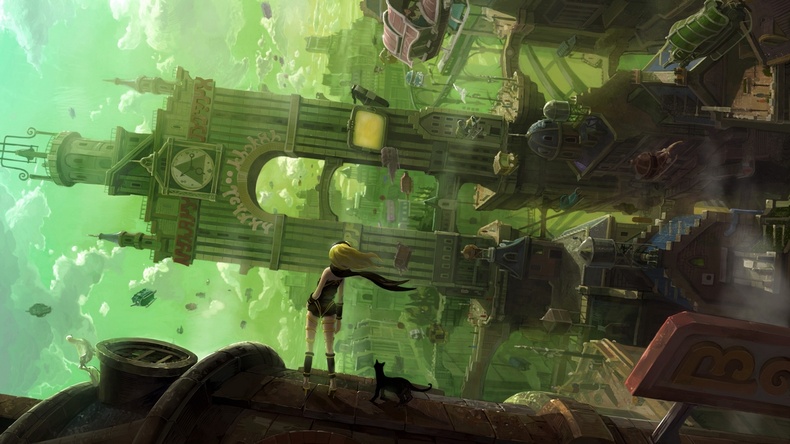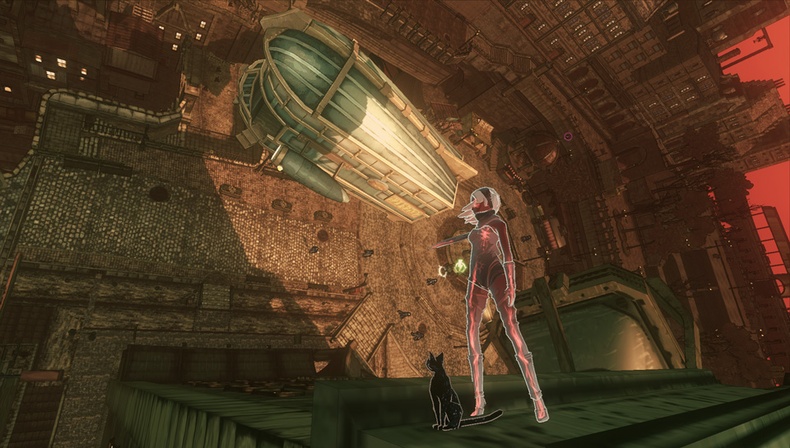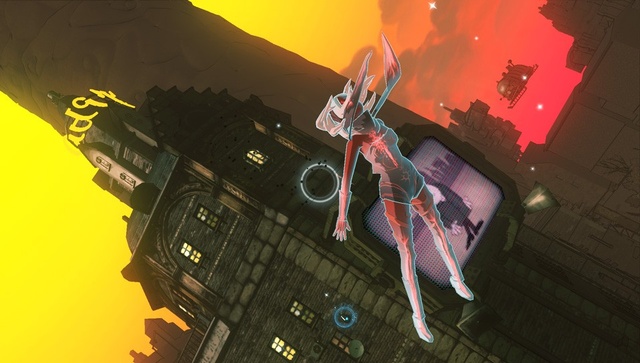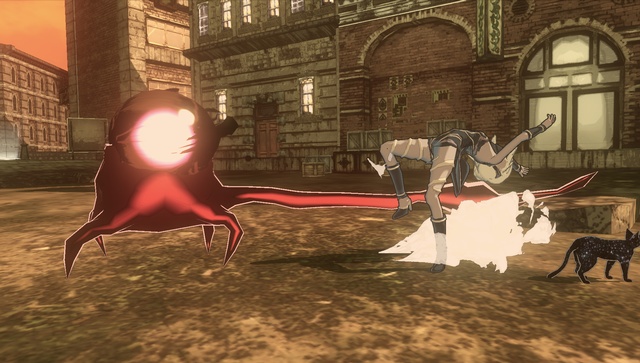This post has not been edited by the GamesBeat staff. Opinions by GamesBeat community writers do not necessarily reflect those of the staff.

I think I know how Superman must feel. The streets of Metropolis would look outright useless. Stairs? Elevators? Who needs them? Sometimes I wonder if he ever feels pity for the lowly humans who has to walk, drive, and walk some more to their jobs. How do I know all this? I just finished Gravity Rush.
Gravity Rush has you playing as Kat, an amnesiac girl who wakes up with the ability to control her own personal gravity. Thanks to this ability, she can fly just about anywhere she pleases, and Gravity Rush gives her a wonderful, impossible, albeit one under siege, city of Hekseville to do just that. Unlike most cities, Hekseville isn’t built on solid ground. Instead it’s kept aloft by a series of girders attached to a giant center column that rises into the sky and far, far below. In essence, the city itself floats above a bottomless abyss giving Kat the opportunity to not just explore above the city but below it as well.
At first, Kat will only be able to explore a small district with the other three districts seemingly cut off from her in the most artificial way. If Kat tries to go to these areas prematurely, the game automatically warps you to the last “safe” location. Those other districts become open to her pretty quickly, but Gravity Rush does a poor job of coming up with a good reason as to why she can’t access them in the first place. Then again, why would she even want to explore them?

With its European inspired architecture, Hekseville looks incredible, as does everything else really thanks to the cel shaded art style that really lends the entire game an anime feel. From the apartment homes found all over the residential district to the towering skyscrapers of the Downtown district, the city most certainly looks like a picturesque postcard one would gladly send home, but it doesn’t offer Kat very much to do. Hekseville does have various little challenge missions like a racing challenge or destroy as many enemies as possible within a time limit with an enticing reward for doing well, but of the 30 or so challenges, all of them boil down to just one of five types. Although these challenges use the cityscape as its playground, none of them gives you a better picture about its people.
Whereas Superman has an almost infinite affection for humans, Kat has no reasons to care about the citizens of Hekseville. They do nothing more than walk around or duck when you fly by them. I’ve seen Kat unintentionally pull scores of citizens to their demise with her gravity powers without anyone noticing or saying anything about it. They occasionally do have something to say but only the ones clearly marked as having something to say. The rest simply mills about aimlessly. Really, collecting power crystals, which Kat uses to upgrade her abilities, that are scattered all over the city’s rooftops and below it offer the only compelling reason for Kat to explore Hekseville.
Gravity Rush’s anime feel extends further than just aesthetically. Kat’s story also feels very much like the first season/series of a longer anime show. Just not necessarily in a good way. Although Gravity Rush ends with a fairly epic fight with the fate of one of the districts hanging in the balance, it ultimately didn’t feel enough. The city remains plagued by mysterious invaders, Kat still has no idea who she really is, and certain events that I thought would wrap up before the end instead got an unexpected twist that seems to serve only to keep you hooked until the sequel. In essence the story ends up feeling extremely incomplete.

I’ve just laid out a litany of Gravity Rush’s misdeeds, but if you scroll down and check my score, it doesn’t entirely jive with what I’ve been pointing out thus far has it? Despite these numerous offenses, Gravity Rush succeeded in creating something that feels wholly unique. Kat’s gravitational powers don’t exactly let her fly just like Superman. If it were, I would have given it a lower score. Kat doesn’t fly through the air. She falls through it.
Her abilities let her choose which direction gravity pulls on her, so a normal flight for Kat involves falling towards the sky, stopping in midair, choosing a new direction, falling in that direction, and repeating this cycle until she gets to her destination. After a while this becomes second nature making the journey from point A to point B a real rush. The closest analogue to this experience of flying naturally would be some kind of an airplane game, but airplanes lack the freedom Kat has when it comes to flying. Yet at the same time her flight has inherent risks as well from overshooting the target to outright missing it. Getting Kat to go exactly on target becomes a real accomplishment.
Speaking of Kat she plays the role of the underdog very well. The people of Hekseville started off distrusting her and her abilities, but she never lets it stop her from wanting to help them nor does she complain about it. Her plight may not be the most relatable unless you too have gotten amnesia and gotten super human powers at the same time, but she wins over both the people of the city as well as the player based solely on her character.

So how does one take in Gravity Rush, this supposedly open world game with barely a thing to do in it piled on top of a story, as engaging as it is initially, that doesn’t even try to come to a conclusion? It largely falls to which do you perefer: experience, or content. The likes of Skyrim and World of Warcraft drowns players with content, but none of them achieves the simple joy of just moving about their world. As many sins as Gravity Rush may have, they can easily be forgotten with one simple trip underneath the city looking for another cluster of power crystals
Pros:
- There’s nothing like “flying” in Gravity Rush
- Beautiful art style
- Very likeable main character
- Sublime soundtrack
- Great use (even preferable at times) of motion controls
Cons:
- Fairly barren open world
- A story that consciously chooses to be incomplete for the sake of a sequel
